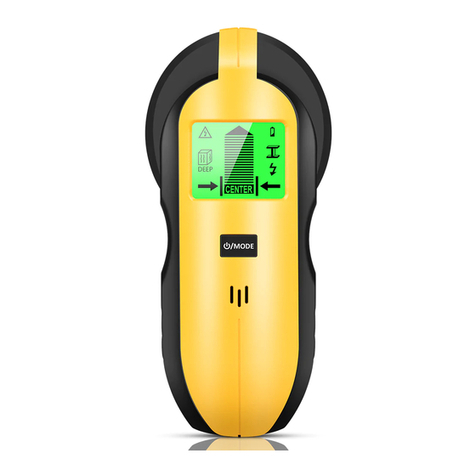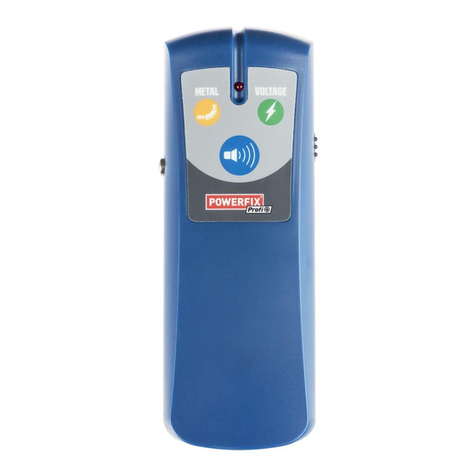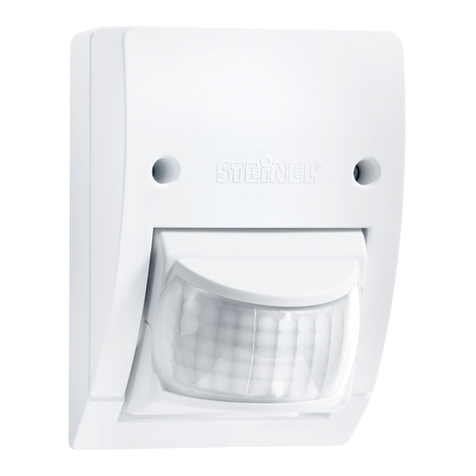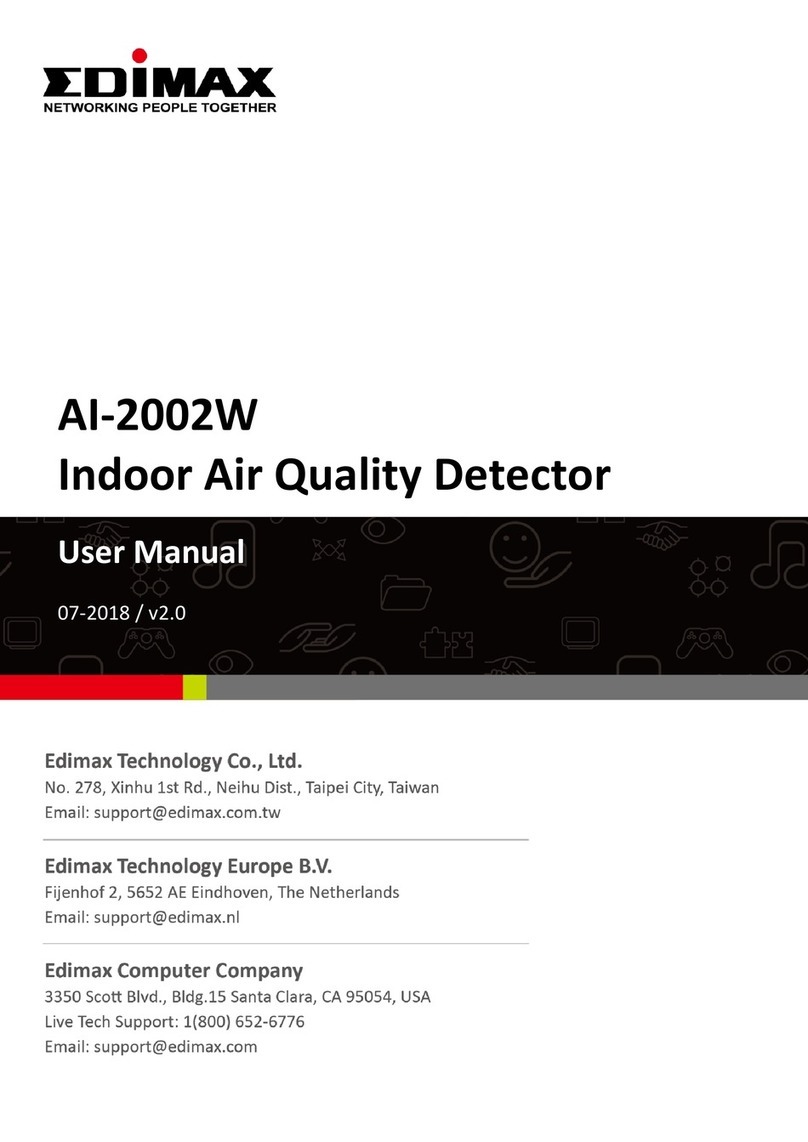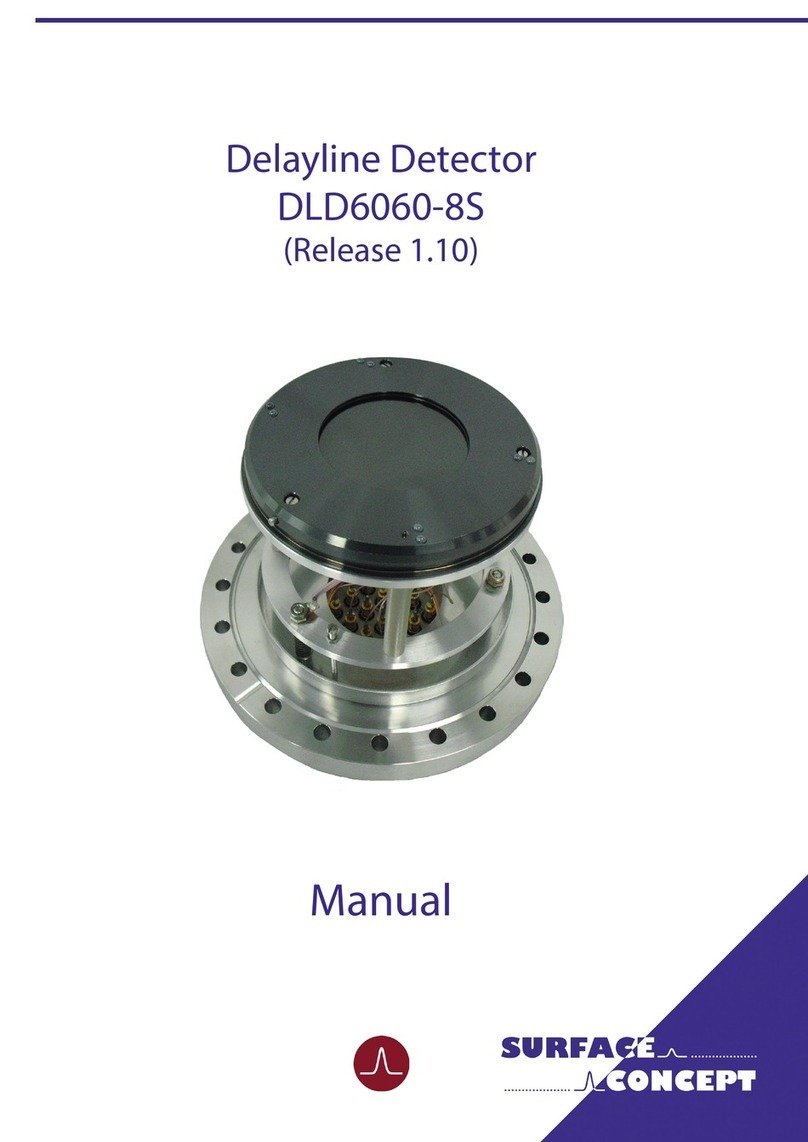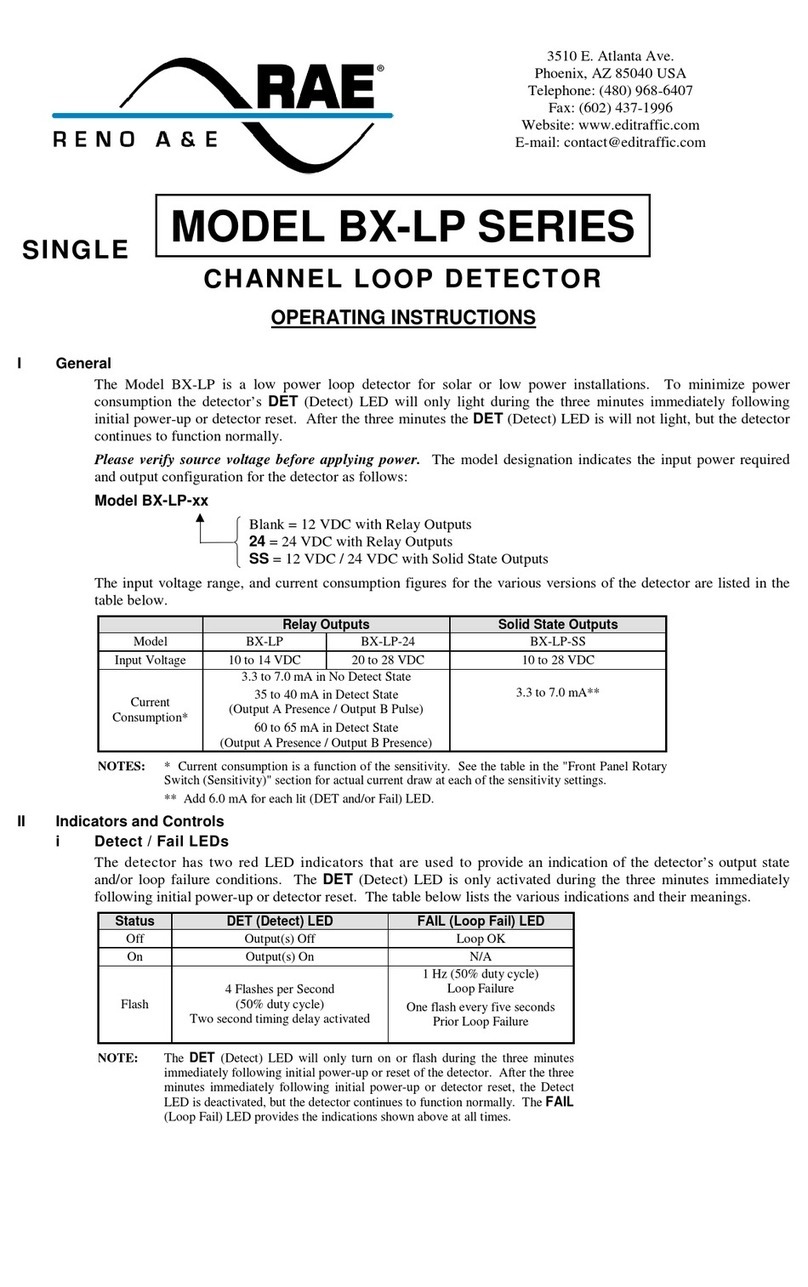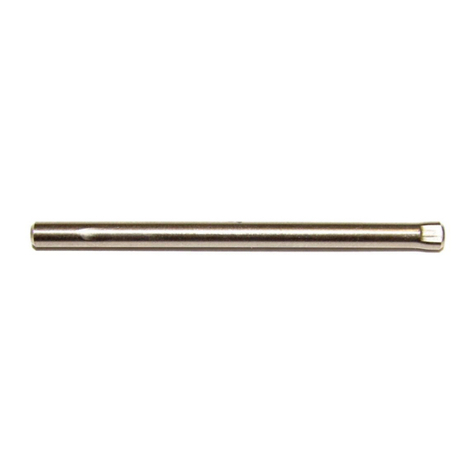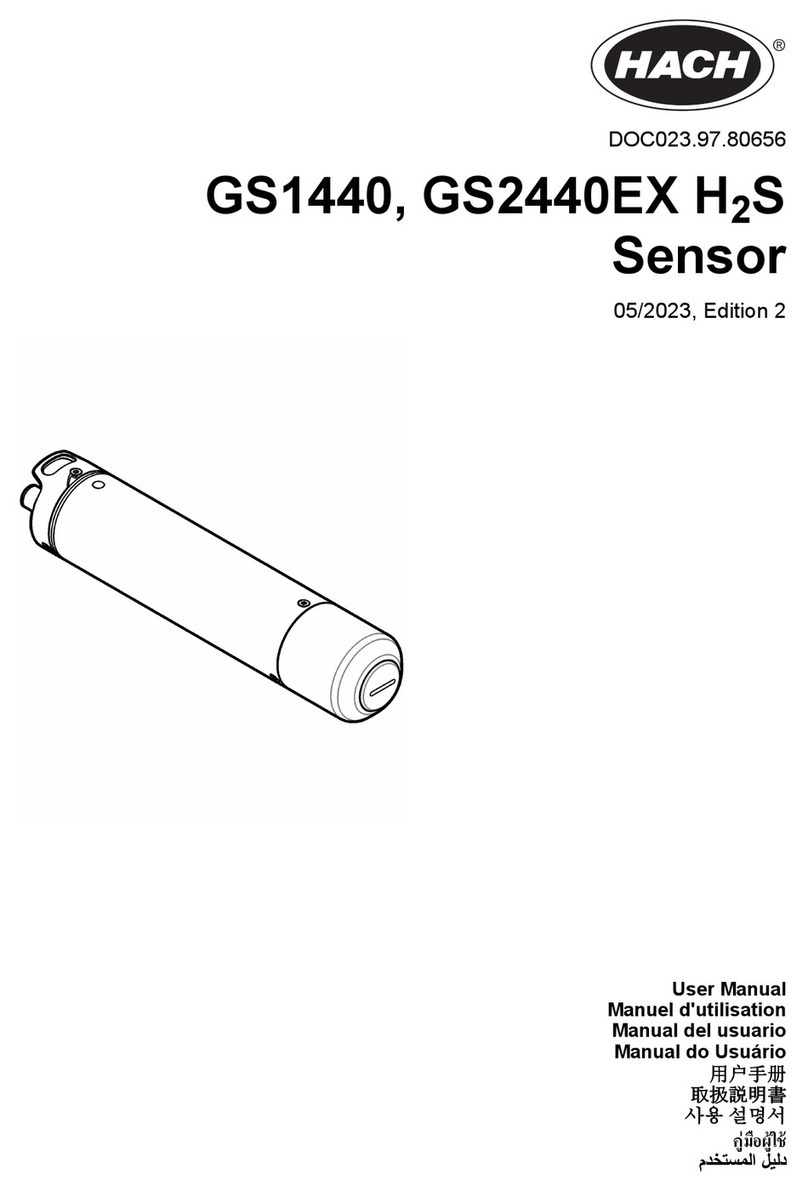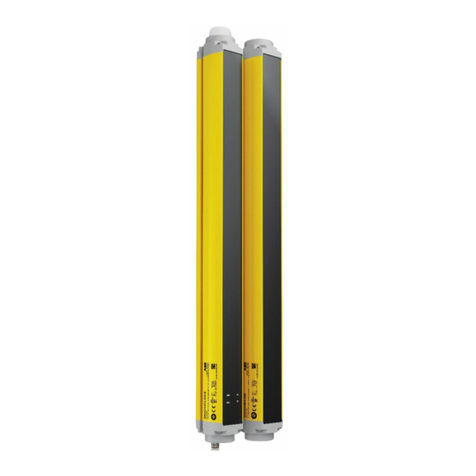Tavool TH511 User manual

Stud Center Finder, Metal and
AC Live Wire Detector (TH511)
This stud finder is designed to find the wooden or metal stud and avoid
the metal and AC wires. This item features five scanning modes:
Stud 1⁄2 in. Scan Mode: Locates the center and edges of wood and
metal studs up to 1⁄2 in. (12 mm) deep
Stud 1 in. Scan Mode: Locates the center and edges of wood and metal
studs up to 1 in. (25 mm) deep
Stud 1½ in. Scan Mode: Locates the center and edges of wood and
metal studs up to 1½ in. (38 mm) deep
Metal Scan Mode: Detects metal up to 2.36 in. (60 mm) deep
AC Scan Mode: Detects live unshielded AC wires up to 2 in. (51mm)
deep
INSTALLING THE BATTERY
There is no battery in the tool. Please install the battery firstly
Push the battery cover at the bottom of the tool and
open it. Insert a new 9-volt battery, matching the
positive (+) and negative (-) terminals to the battery
wire. Snap the battery into place and close battery
cover.
Low Battery Indicator: The Low Battery Indicator icon displays when
the battery level is getting low.When the low battery indicator icon
appears on the screen, the battery level is too low and not sufficient to
power the tool for proper operation. Please replace the 9-volt battery with
a brand new battery immediately.
PRODUCT DISPLAY
1. The Center Pointing
System
2. AC Wire Warning
3. Low Battery Indication
4. Metal Mode Indication
5. Stud Mode Indication
6. AC Mode Indication
7. Stud edge indicator
8. Stud 1 1⁄2 in. Scan
mode
9. AC Scan mode
10. Metal Scan mode
11. Power Button & Mode
Switch Button
12. Direction indicator
13. Stud center indicator
14. Stud 1⁄2 in. Scan mode
15. Stud 1 in. Scan mode
16. Calibrate Button
17. Battery case (Back of unit)
18.Magnet
(
additional function
)
Please note:
1. Press the mode button (NUMBER 11) to choose the mode.
2. Press the scan button on the side of the tool (NUMBER 16) to
calibrate the tool. After calibrate it, you don’t have to pressing the
scan button all the time when scanning the wall
3. The Magnet (NUMBER 18) is an additional function. it can be
used to to confirm the metal position twice.But please note, this
function is only a reference for the second confirmation of the
location of the metal or metal stud, not as a basis for judgment.
Note: The target size and distance determine the size of the magnetic
force. If the distance is too far or the metal is too small, the magnetic
force may not change.
Work Principle
Because the stud finders are looking for a change in density behind wall
in Stud Scan Modes and Deep Scan Modes, not a particular material. The
detector will react to metal studs the same as it would for wooden
studs. We can only hang things to wooden stud and can’t drill to the metal
stud.
It is important to Confirm it is a metal stud or wooden stud before you act
ually drill to the wall.After you detect the center of a stud, Please Put the
bottom magnet on the center mark to recheck whether it is metal or wood
stud, or Use Metal Scan Mode (refer to the description of Metal Scan Mode
below) to determine whether the previous reading in Stud scan was a
wooden stud or metal stud.
Stud Scan Mode 1
Use this stud scan mode to find the center and edges of wood or metal
studs up to 1⁄2 in. (12 mm) deep. For best results, always start in this
mode when looking for studs.
Step 1: Press the mode button to choose the “stud mode”
Step 2
:
Put the scanner on the wall and Press the Scan Button on the
side of the tool to calibrate. After a short beep sounds, confirming
calibration is complete.
Note: Be sure not to move the scanner while calibrating.
Calibrate the tool on the wall before every scan.
Step3: Move it flat against the wall to scan.
Note: If it finds metal or wooden stud, the screen will show as the picture
and it beeps.
If it finds nothing, please repeat the above steps ( calibrate it and move it
to scan)

Step4: Find the edge and center of the stud and mark it.
Step5: Put the bottom magnet of the tool on the spot that you
marked in the step4, to confirm whether it is metal or wood stud. If
it is metal, please don’t drill into it
Note:
1. WireWarning detection works in all modes. The indicator flashes on
the screen when detecting a live, unshielded wire.
2. Factors like humidity, temperature, and even the minor electric
readings from your hand, which all have an impact on the readings from
the wall.
3. If Stud Scan Mode provides irregular readings, the wood or studs
might be behind deeper than 0.5 in. (12 mm). Slide the Mode Selector
Switch to Deep Scan Mode.
Stud Scan Mode 2
Deep scan mode doubles the scanning depth of wood stud and metal stud
to 1 in. (25 mm) deep and allows for increased accuracy on deeper targets.
Step 1: Press the mode button to choose the “Deep mode”
Step 2: Put the scanner on the wall and Press the Scan Button on the
side of the tool to calibrate. After a short beep sounds, confirming
calibration is complete.
Note: Be sure not to move the scanner while calibrating.
Calibrate the tool on the wall before every scan.
Step 3: Move it flat against the wall to scan.
Note: If it finds metal or wooden stud, the screen will show as the picture
and it beeps .If it finds nothing, please repeat the above steps ( calibrate
it on a new place on the wall and move it to scan)
Step4: Find the edge and center of the stud and mark it.
Step5: Put the bottom magnet of the tool on the spot that you
marked in the step4, to confirm whether it is metal or wood stud. If
it is metal, please don’t drill into it
Note:
1. WireWarning detection works in all modes. The indicator flashes on
the screen when detecting a live, unshielded wire.
2. Factors like humidity, temperature, and even the minor electric
readings from your hand, which all have an impact on the readings from
the wall.
3.If Stud Scan Mode provides irregular readings, the wood or studs
might be behind deeper than 1 in. (25 mm). Slide the Mode Selector
Switch to Deep Scan Mode.
Stud Scan Mode 3
Use this stud scan mode to find the center and edges of wood or metal
studs up to 11⁄2 in. (38 mm) deep. For best results, always start in this
mode when looking for studs.
Step 1: Press the mode button to choose the “stud mode”
Step 2
:
Put the scanner on the wall and Press the Scan Button on the
side of the tool to calibrate. After a short beep sounds, confirming
calibration is complete.
Note: Be sure not to move the scanner while calibrating.
Calibrate the tool on the wall before every scan.
Step3: Move it flat against the wall to scan.
Note: If it finds metal or wooden stud, the screen will show as the picture
and it beeps.
If it finds nothing, please repeat the above steps ( calibrate it and move it
to scan)

Step4: Find the edge and center of the stud and mark it.
Step5: Put the bottom magnet of the tool on the spot that you
marked in the step4, to confirm whether it is metal or wood stud. If
it is metal, please don’t drill into it
Note:
1. WireWarning detection works in all modes. The indicator flashes on
the screen when detecting a live, unshielded wire.
2. Factors like humidity, temperature, and even the minor electric
readings from your hand, which all have an impact on the readings from
the wall.
Frequently Questions and Answers
1. I do all the steps as the instructions said, but the screen shows
nothing. No readings at all
2. It gives a different center of stud position every time on the same stud
3. It was not consistent
4. It works for one stud and not the next
5. It rarely find the same center or edge twice, it is wrong 3 out of 5
times.
If you encounters the above issues in stud mode or deep mode, It may
be caused by the position you do the calibration.
Tavool electronic stud finder looks for a change in density behind wall to
locate the wooden stud and metal studs in Stud Scan Mode and Deep
Scan Mode. When you calibrate it at a position on the wall, the stud
finder gets an initial density sample. When it gets to the section with dif
ferent density, the stud finder will create different circuitry inside and
trigger its internal program to locate the center of the objects exactly.
If you calibrate it exactly on the wooden stud, the initial density
sample is not reliable, so the tool may has no readings at all or has
different results, or is not consistent.
Similarly, if you calibrate it very close to the wooden stud, the initial
density sample is not reliable,too. And it may cause that you didn’t find
the exact center or Works for one stud and not the next.
Above all, calibration before every scan is very important. And where you
calibrate the tool is important, too.
If any other expected questions,or if the tool beeps all the time,
please feel free to contact us at [email protected] to get a
replacement or refund. We always stand behind our products to
offer proper solutions and won’t let you suffer any loss.
If any problems, your contacting us before an review is highly
appreciated!
Metal Scan Mode
Use this mode to locate metal material and avoid hazards such as pipes
behind wall up to 2.36 in(60 mm) deep.
Metal scan mode has Maximum metal sensitivity and is ideal for quickly
finding the approximate location of metal. However, sensitivity can be
reduced by calibrating the tool closer to metal.For maximum metal
sensitivity, calibrate it in the air by pressing and holding the Power
button.
Step 1: Press the mode button to choose the “Metal mode”
Step 2: Calibrate it in the air or on the wall (when you need to reduce the
metal sensitive) before every scan
Step 3: Move it flat against the wall to scan.
Step 4: When the signal bar is full, mark the spot. Then move it in the
same direction, you will get another spot where the signal bar is full.
The metal is at the center of the 2 spots.
Step 5: If the distance between the 2 spots is very long than actual
size, please reduce the metal sensitivity by calibrating it on the wall and
exactly on the spot, then repeat the step 4 to find the 2 spot. The metal is
at the center of the 2 spots.
Step6: Put the bottom magnet of the tool on the spot that you
marked in the step4, to confirm whether it is metal or not.
Note:
1. WireWarning detection works in all modes. The indicator flashes on
the screen when detecting a live, unshielded wire.
2. Factors like humidity, temperature, and even the minor electric
readings from your hand, which all have an impact on the readings from
the wall.
Ac wire Scan Mode
Ac wire mode finds live, unshielded, electrical wires up to 2 inches
(51mm) deep.It works by sensing the magnetic field changes of live AC
wire. It indicator where the ac wire is bu not the exact center. And it
needed to calibrate in the air, too.
Step 1: Press the mode button to choose the “Ac wire mode”
Step 2: Calibrate it in the air or on the wall before every scan

Step 3: Move it flat against the wall to scan.
Step 4: Mark where the strongest signal appears.
Note:
1. AC Scan will only detect live (hot) unshielded AC wiring.
2. Factors like humidity, temperature, and even the minor electric
readings from your hand, which all have an impact on the readings from
the wall.
SCANNING DIFFERENT SURFACES
Press MODE button switch to the desired mode: Stud mode 1 for finding
wood or metal studs for 1⁄2 in. (12 mm) ; Stud mode 2 for finding wood or
metal studs for 1 in. (25 mm); Stud mode 3 for finding wood or metal
studs for 1½ in. (38 mm); Metal Scan for locating metal; or AC Scan for
locating live AC wiring.Unit will remain off if Power button is not pressed.
Wallpaper: Multifunctional wall scanner TH511 functions normally on
walls covered with wallpaper or fabric, unless the materials are metallic
foil, contain metallic fibers, or are still wet after application. Wallpaper
may need to dry for several weeks after application.
Freshly painted walls: May take one week or longer to dry after
application.
Lath & plaster: Due to irregularities in plaster thickness, it is difficult for
Multifunctional wall scanner TH511 to locate studs in Stud modes.
Change to Metal Scan mode to locate the nail heads holing wood lath to
the studs. If the plaster has metal mesh reinforcement, Multifunctional
wall scanner TH511 may be unable to detect through that material.
Extremely textured walls or acoustic ceilings:
When scanning a ceiling or wall with an uneven surface, place thin
cardboard on the surface to be scanned and scan over the cardboard in
Stud 1½ in. scan mode. If irregular scanning results are received, switch
to Metal Scan mode to locate nails or drywall screws that line up
vertically where a stud or joist is positioned.
Wood flooring, subflooring, or gypsum drywall over plywood
sheathing: Use Stud 1½ in. scan mode and move the tool slowly. The
Signal Strength Indicator may only display limited bars when the tool
locates a stud through thick surfaces.
Multifunctional wall scanner TH511 cannot scan for wood
studs and joists through concrete or carpet and padding.
In problematic situations, try using Metal Scan to locate
nails or screws that may line up vertically where a stud or
joist is positioned.
Note: Sensing depth and accuracy can vary due to moisture,
content of materials, wall texture, and paint.
WARNING
1. Electrical field locators may not detect live AC wires if wires are more
than 2 in. (51 mm) from the scanned surface, in concrete, encased in
conduit, present behind a plywood shear wall or metallic wall covering, or
if moisture is present in the environment or scanned surface.Always turn
off power when working near electrical wires.
2. Do not assume there are no live electrical wires in the wall. do not
take actions that could be dangerous if the wall contains a live electrical
wire. always turn off the electrical power, gas, and water supplies before
penetrating a surface. failure to follow these instructions may result in
electric shock, fire, and/or serious injury or property damage.always turn
off power when working near electrical wires.
3. Do not rely exclusively on the detector to locate items behind the
scanned surface. Use other information sources to help locate items
before penetrating the surface. Such additional sources include
construction plans, visible points of entry of pipes and wiring into walls,
such as in a basement, and in standard 16 and 24 in. (41 and 61 cm)
stud spacing practices.
If you have any problems, please feel free to contact us at
[email protected] Please find more helpful hints below!
Other Tavool Security Sensor manuals
Popular Security Sensor manuals by other brands
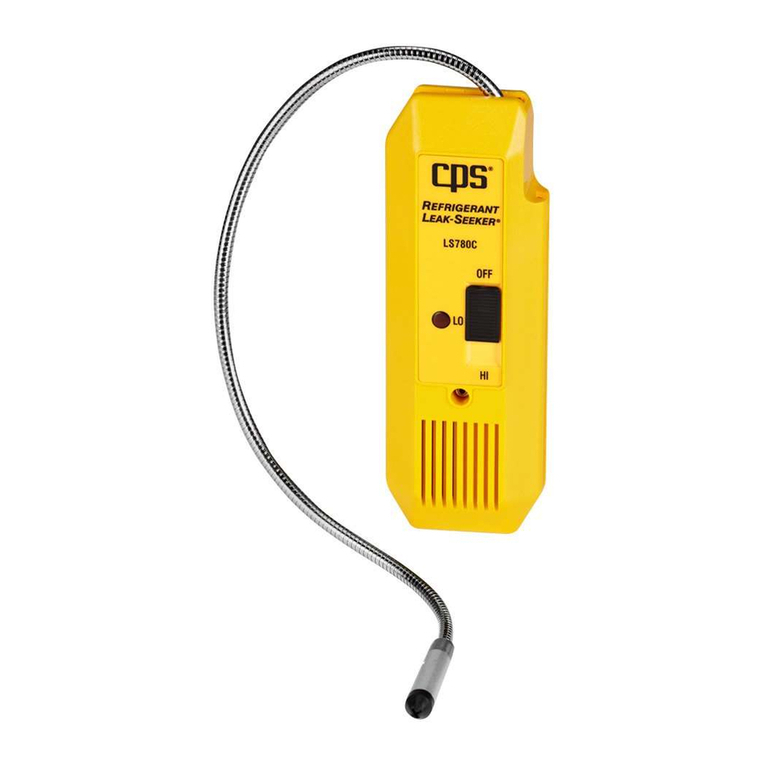
CPS
CPS LEAK-SEEKER LS780C Operation manual

General
General NGD269 user manual
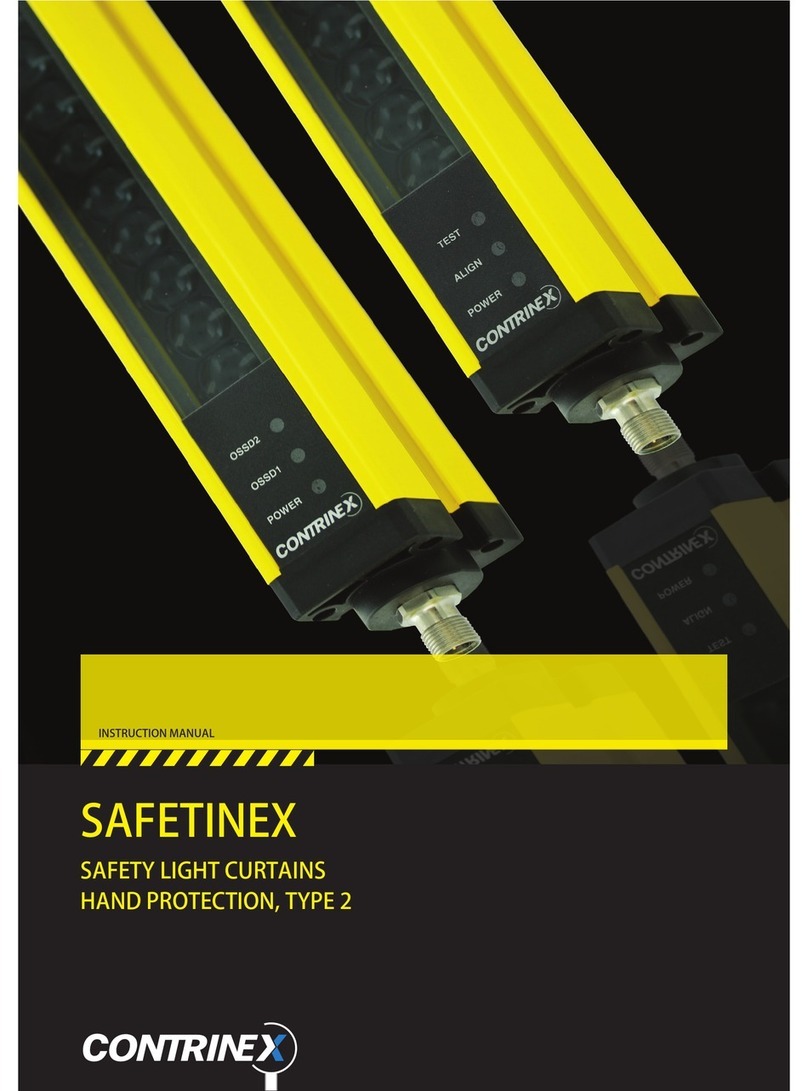
Contrinex
Contrinex SAFETINEX instruction manual
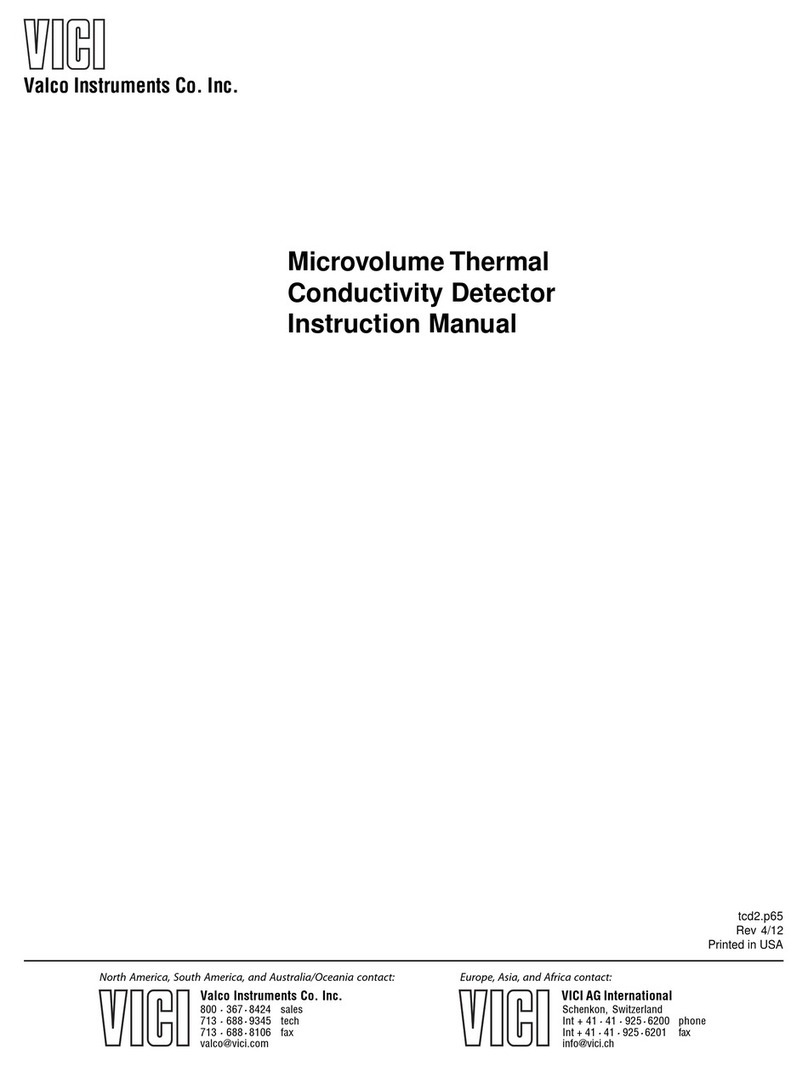
Valco Instruments Co. Inc.
Valco Instruments Co. Inc. TCD instruction manual
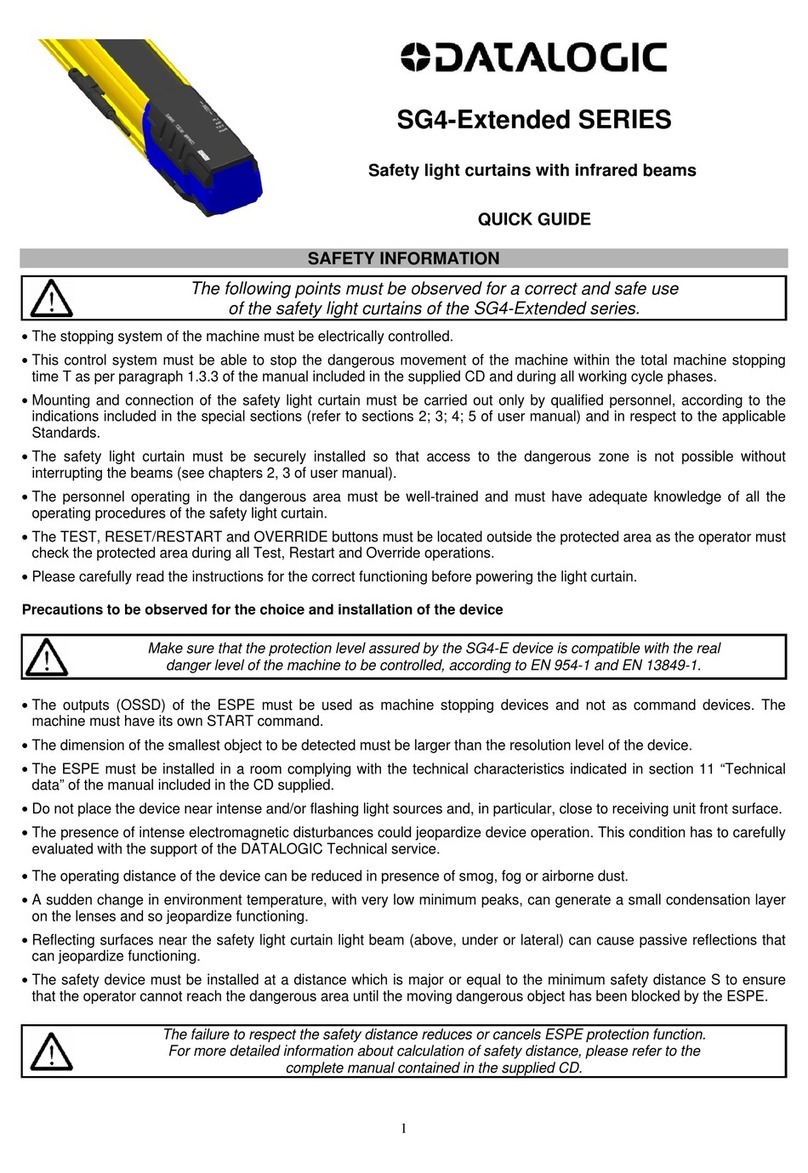
Datalogic
Datalogic SG4-Extended SERIES quick guide
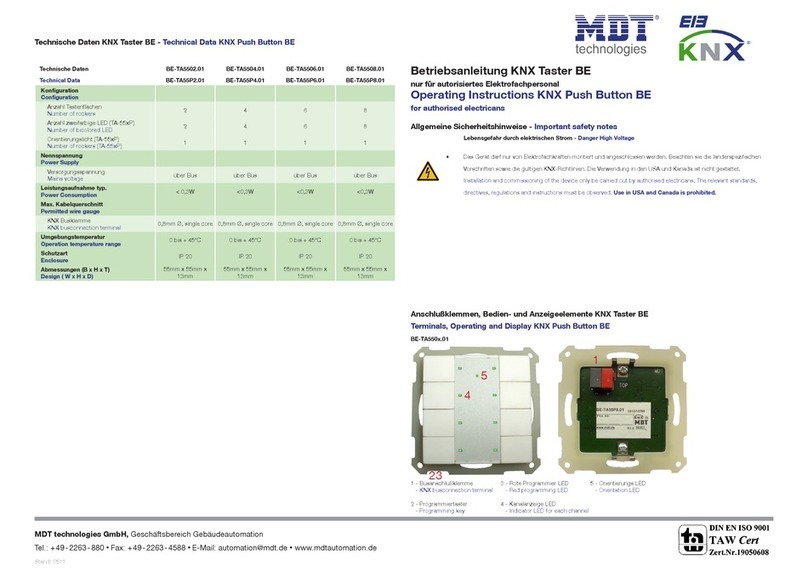
MDT Technologies
MDT Technologies BE-TA5502.01 operating instructions
